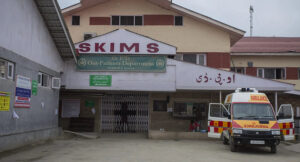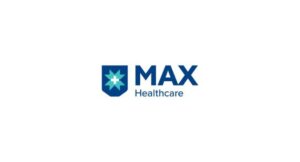The global medical tourism market is witnessing significant growth, driven by the rising demand for high-quality yet cost-effective medical treatments across international borders. The market is projected to grow from USD 46.27 billion in 2023 to an estimated USD 142.7 billion by 2032, reflecting a CAGR of 15.12% from 2024 to 2032. Factors such as the availability of advanced healthcare infrastructure in emerging medical tourism destinations, shorter wait times for critical procedures, and affordable treatment options compared to developed nations are key contributors to this expansion. Additionally, increasing awareness about medical tourism through digital platforms, coupled with government initiatives to promote cross-border healthcare, is further propelling market growth. Popular procedures driving this trend include cosmetic surgeries, dental treatments, fertility treatments, orthopedic procedures, and specialized surgeries such as cardiovascular and oncology treatments.
The market is also shaped by technological advancements and international collaborations, which enhance the accessibility and quality of healthcare services in medical tourism hotspots. Countries such as India, Thailand, Malaysia, Mexico, and Turkey are among the leading destinations due to their state-of-the-art hospitals, skilled healthcare professionals, and competitive pricing. However, challenges such as regulatory barriers, visa restrictions, and concerns over post-operative care in foreign countries may impact market expansion. Nonetheless, the growing acceptance of telemedicine and medical concierge services is improving patient confidence in traveling abroad for medical treatments. As global healthcare costs continue to rise, medical tourism is expected to remain a viable alternative, driving sustained market growth over the forecast period.
Key growth determinants
Cost-effective medical treatments and high-quality healthcare
One of the primary drivers of the medical tourism market is the significant cost savings offered by emerging medical destinations compared to developed nations. Patients from countries like the U.S., Canada, and the U.K. seek medical treatments abroad due to high healthcare costs and insurance limitations. Countries such as India, Thailand, and Mexico provide high-quality healthcare services at a fraction of the price, making medical tourism an attractive alternative. Additionally, international accreditation of hospitals, technological advancements, and skilled medical professionals contribute to the growing preference for overseas medical treatments.
Rising demand for specialized medical procedures
Increasing incidences of chronic diseases, the aging population, and advancements in cosmetic, orthopedic, cardiovascular, and fertility treatments are fueling demand for medical tourism. Patients opt for international healthcare providers to access cutting-edge treatments, shorter wait times, and innovative surgical procedures. Additionally, medical tourists seek treatments not readily available or legal in their home countries, such as certain fertility treatments and stem cell therapies, further boosting market expansion.
Government support and infrastructure development
Several governments are actively promoting medical tourism by investing in world-class healthcare facilities, launching special visa programs, and establishing medical tourism hubs. Countries like Singapore, the UAE, and Turkey are developing policies to attract international patients by offering streamlined medical visas, tax incentives, and infrastructure development in healthcare. Public-private partnerships (PPPs) in medical tourism, including collaborations between hospitals, airlines, and hospitality services, further facilitate the growth of this sector.
Technological advancements and telemedicine integration
The integration of AI, telemedicine, and digital health platforms has enhanced accessibility and patient engagement in medical tourism. Patients can now consult specialists online, receive pre-treatment counseling, and access follow-up care remotely, making cross-border medical travel more convenient. AI-driven diagnostics, robotic-assisted surgeries, and minimally invasive treatments have also improved patient outcomes, increasing trust in international medical providers. As digitalization continues to evolve, medical tourism is expected to witness greater patient confidence, improved care coordination, and seamless cross-border healthcare experiences.
Key growth barriers
Regulatory and legal challenges
One of the significant barriers to the medical tourism market is the variation in healthcare regulations, accreditation standards, and legal frameworks across countries. Differences in medical malpractice laws, patient rights, and treatment approvals create uncertainty for international patients. Additionally, some insurance companies do not cover treatments performed abroad, limiting the accessibility of medical tourism for a broader patient base. Stricter visa policies and bureaucratic hurdles in obtaining medical visas also act as obstacles, particularly for patients traveling from developing nations.
Quality and safety concerns
While many medical tourism destinations offer high-quality healthcare, concerns over inconsistent standards, counterfeit medications, and unregulated practices can deter patients. Lack of post-operative care, language barriers, and varying levels of medical expertise pose potential risks, affecting patient trust. The absence of a globally unified accreditation system means that some healthcare providers may not meet the safety standards expected by international patients, leading to apprehension in seeking treatment abroad.
Travel risks and logistical challenges
Long-distance travel for medical procedures presents physical, financial, and logistical challenges for patients. Risks associated with air travel after surgeries, medical complications due to long-haul flights, and post-treatment complications without adequate follow-up care can impact patient recovery. Additionally, factors such as unexpected treatment costs, lack of transparency in pricing, and hidden expenses make it difficult for patients to plan their medical trips effectively. Political instability, economic downturns, and travel restrictions in key medical tourism destinations further pose challenges to market growth.
Pandemic-related uncertainties and health risks
The Covid-19 pandemic highlighted the vulnerabilities of the medical tourism industry, with border closures, travel bans, and heightened infection risks affecting patient mobility. While the market is recovering, ongoing concerns about infectious diseases, emerging health crises, and stringent quarantine regulations continue to impact international medical travel. Patients may hesitate to seek treatment abroad due to fears of contracting infections, particularly in countries with less developed public health infrastructure. Additionally, fluctuating international healthcare policies and uncertainties surrounding future pandemics remain potential barriers to long-term market stability.
Regional analysis
Asia-Pacific: Leading the global market
The Asia-Pacific region dominates the medical tourism market, driven by countries such as India, Thailand, Malaysia, and Singapore, which offer high-quality healthcare at competitive prices. India, in particular, is a preferred destination for cardiac surgeries, orthopedic procedures, and fertility treatments, owing to its skilled medical workforce and cost-effective healthcare infrastructure. Thailand and Malaysia are recognized for cosmetic and dental procedures, attracting patients from North America and Europe. Additionally, government initiatives, medical visa programs, and internationally accredited hospitals further strengthen the region’s position. The region’s rapid advancements in robotic-assisted surgeries, regenerative medicine, and alternative therapies are expected to boost market expansion in the coming years.
North America: Outbound medical tourism growth
North America, particularly the United States and Canada, contributes significantly to outbound medical tourism, as high healthcare costs and long wait times drive patients to seek treatments abroad. Many U.S. patients travel to Mexico, Costa Rica, and the Caribbean for affordable dental procedures, cosmetic surgeries, and bariatric treatments. However, the region also has advanced healthcare facilities, attracting patients for specialized treatments in oncology, neurology, and organ transplants. The increasing acceptance of cross-border healthcare agreements and telemedicine consultations is expected to shape the region’s medical tourism dynamics.
Europe: Growing inbound and outbound tourism
Europe has a dual role in the medical tourism industry, with countries such as Germany, Switzerland, and Turkey emerging as top destinations for high-quality, specialized treatments in areas like orthopedics, cardiology, and cancer care. The U.K. and France, on the other hand, witness substantial outbound medical tourism, as patients seek quicker and more cost-effective treatments in Eastern Europe and Asia. Turkey is a key player in hair transplants, cosmetic surgeries, and dental procedures, offering cutting-edge healthcare at competitive rates. Additionally, advancements in regenerative medicine, medical research, and EU-funded healthcare initiatives continue to drive the region’s growth.
Middle East & Africa: Expanding medical infrastructure
The Middle East, particularly the UAE, Saudi Arabia, and Jordan, is witnessing rapid growth in medical tourism, fueled by government investments in state-of-the-art hospitals and luxury medical facilities. The UAE, especially Dubai and Abu Dhabi, is positioning itself as a premium medical tourism hub, offering world-class cosmetic, orthopedic, and fertility treatments. Meanwhile, Africa is still in the early stages of medical tourism development, with South Africa emerging as a key destination for cosmetic and dental procedures. The region faces challenges such as political instability, limited specialized treatments, and travel restrictions, but growing investments in healthcare infrastructure and accreditation programs are expected to drive future growth.
Latin America: Cost-effective and rapidly growing market
Latin America is gaining traction in medical tourism, particularly in Mexico, Brazil, Costa Rica, and Colombia, which offer affordable and high-quality medical treatments. Mexico, due to its proximity to the U.S., attracts a large number of American patients for dental work, bariatric surgeries, and cosmetic procedures. Brazil is a leader in plastic surgery, while Costa Rica is known for dental and wellness tourism. The region’s affordability, improving hospital infrastructure, and government-backed medical tourism initiatives are driving its expansion. However, safety concerns and inconsistent healthcare regulations remain challenges for sustained growth. Credence Research









